
Text Fwd: Pyeongtaek Peace Center
Air Force to hold air war exercise in S. Korea By Franklin Fisher,
Stars and Stripes Pacific edition, Monday, January 12, 2009
* Image caption in the original article: Christopher Boitz / USAF
At Osan Air Base in South Korea last July, an F-16 fighter of Osan’s 36th Fighter Squadron lands after flying a mock combat mission during a training exercise. This week the U.S. Air Force throughout South Korea is holding an exercise to test its readiness to fight an air war.
OSAN AIR BASE, South Korea — U.S. airmen across South Korea will take part this week in a training exercise that tests their readiness to fight an air war.
U.S. 7th Air Force (Air Forces Korea) will oversee the quarterly operational readiness exercise, which will involve more than 8,500 U.S. troops, most of them airmen, including those at Osan and Kunsan air bases.
Army Patriot missile soldiers also will take part.
The exercise will test — through various mock war drills — the ability of the U.S. Air Force in South Korea to do the things it would have to do in wartime — mainly to knock out enemy aircraft, attack enemy troops and other ground targets.
“Our primary goal obviously is to make sure we’re ‘Ready to fight tonight’ and win against possible North Korean attack,” said 1st Lt. Malinda C. Singleton, spokeswoman for Osan’s 51st Fighter Wing.
The exercise will test senior commanders in their ability to manage the overall air campaign.
Airmen will have to perform under simulated wartime conditions, often in cumbersome chemical protective gear.
“Learning how to operate and survive in a chemical environment, that is a major part to every exercise we do here,” said 1st Lt. David R. Herndon, spokesman for Kunsan’s 8th Fighter Wing.
Pilots will fly mock combat missions over the peninsula. Ground crews will launch and recover the jets. Other airmen, including Security Forces troops, will practice defending their bases.
Airmen will practice giving first aid to themselves or other wounded airmen. Base medical facilities will operate as if at war.
The soldiers of the Army’s 35th Air Defense Artillery Brigade will simulate launching their missiles against incoming enemy missiles or planes.
The brigade is headquartered at Osan and maintains firing batteries at various installations on the peninsula.
This week’s exercise will also serve as a rehearsal for a crucial Pacific Air Forces operational readiness inspection, or ORI, that the U.S. Air Force in South Korea is slated to undergo in the spring.
ORIs test war readiness, and all U.S. Air Force bases worldwide undergo ORIs once every two years, Singleton said.
* related email forward * from Corazon Valdez Fabros , Agatha Haun on Feb. 10
13th Fighter Squadron S. Korea-bound
Misawa unit replacing
Army helo battalion
By Vince Little and Franklin Fisher, Stars and Stripes
Pacific edition, Monday, February 9, 2009
This time, the 13th Fighter Squadron is staying a little closer to
home.
Air Force officials said the unit from Misawa Air Base, Japan,
is gearing up for a six-month deployment to South Korea, where a dozen F-16
fighters and about 400 airmen will temporarily replace an Army attack and
reconnaissance helicopter battalion set to pull out in March.
The 35th Fighter Wing didn’t release a specific date but said
the Misawa deployment would begin later this month.
The Army’s 1st Battalion, 2nd Aviation Regiment, nicknamed
"Half-Attack," will leave Camp Eagle in Wonju, South Korea, this spring for a
new home at Fort Carson, Colo. The troops will deploy to Iraq or Afghanistan
later this year.
The unit, which flies the AH-64D Apache Longbow helicopter,
has 24 aircraft and about 360 soldiers. It’s been stationed in South Korea since
November 1994 as part of the 2nd Infantry Division.
Last year, the U.S. military said the Apache battalion’s
close-air support mission would be picked up by 12 Air Force A-10 Thunderbolt II
attack planes. It later decided to replace the Apaches with F-16s because of
structural concerns over the A-10 airframe.
The 4th Battalion, 2nd Aviation Regiment at Camp Humphreys in
Pyeongtaek will remain as the Army’s lone Apache unit in South
Korea.
"The deployment of the 13th is aimed at balancing assets to
support regional security in the Asia-Pacific theater and meet the needs of the
ongoing global war on terror," said Master Sgt. Allison Day, a 35th Fighter Wing
spokeswoman.
While in South Korea, the squadron and support personnel will
conduct standard training to keep flying proficiencies and tactical requirements
current, she added. That will include sharpening their air-to-air and
air-to-ground roles.
The rotational move "keeps the F-16s within the region and
close to Japan as opposed to out-of-theater deployments that have previously
been conducted," Day said. "(But) as a matter of operational security, it is our
policy not to discuss the details of specific operational or training
missions."
In May 2007, the 13th Fighter Squadron and support airmen
deployed to Balad Air Base in Iraq.
More than 300 airmen with Misawa’s 14th Fighter Squadron are
wrapping up a five-month tour to Balad. No return date has been announced.
---------------------
13th Fighter Squadron to bring more jets to S. Korea
By Franklin Fisher, Stars and Stripes
Pacific edition, Wednesday,
February 11, 2009
OSAN AIR BASE, South Korea — The fighter squadron to deploy from Japan to
South Korea this month will include 14 jets and about 400 airmen during its
six-month tour, officials said Monday.
Last week, the Air Force said the squadron would deploy with
12 F-16 fighters, but on Monday said it had upped the number of jets to
14.
The planes and airmen of the 13th Fighter Squadron at Misawa
Air Base in Japan will spend six months in South Korea to take up the close air
support role currently held by an Army Apache helicopter unit — the 1st
Battalion, 2nd Aviation Regiment at Camp Eagle. The regiment will move to Fort
Carson, Colo., this spring.
"Our primary goal is to ensure there’s no gap in capability,
which this deployment does," said Col. Mike Chandler, chief of staff of 7th Air
Force (Air Forces Korea).
The F-16s to be deployed "more than provide the necessary
firepower for us to defend the Republic of Korea."
The fighter squadron will be assigned a new name, yet to be
announced, during its temporary deployment, 7th Air Force spokeswoman Lt. Col.
Rene White said Monday.
The Air Force said that for security reasons it will not
immediately disclose where in South Korea it will base the
squadron.
Besides pilots, the squadron’s personnel complement will
include mechanics and other support personnel.
The move will require no facilities construction to
accommodate the squadron, Chandler said, but additional police may be needed to
pull security duties.
After the Apache helicopter battalion moves to its new
stateside home, its troops will deploy to Iraq or Afghanistan, the U.S. military
has said.
The Army will still have one Apache battalion in South Korea,
the 4th Battalion, 2nd Aviation Regiment, which is at Camp Humphreys in
Pyeongtaek.
Contact:
Ko You-Kyoung
National Campaign for Eradication of Crimes by U.S. Troops in Korea
us@usacrime.or.kr
* The Songtan air base is wrongly known as Osan air base.

![[URGENT PLEA: In Update] EMERGENCY in GANGJEONG Since AUG. 24, 2011](http://2.bp.blogspot.com/-3iz8k-USXVY/TlmRYhhIYtI/AAAAAAAAL2c/9dbF85ZIkIs/s227/jejusit.jpg)

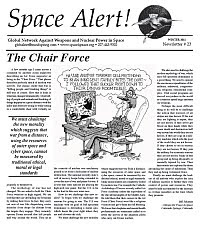

![[Solidarity from Japan for the Jeju] 253 individuals and 16 groups/organizations](http://2.bp.blogspot.com/_gnM5QlRx-4c/TR_YeNVE1yI/AAAAAAAAHWQ/ARyf6oQN0S0/S227/jeju_12_10j.jpg)
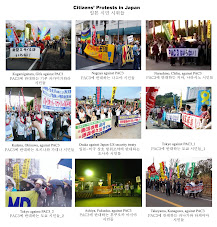
![[Translation] Korean organizations' statement: Immediately cancel the joint ROK-US drill Nov 26](http://2.bp.blogspot.com/_gnM5QlRx-4c/TPOE8VKXHFI/AAAAAAAAGlM/8lryt-8sFjc/S227/1.jpg)
![HOT! [Hankyoreh Hani TV] Beneath the Surface: the investigation into the sinking of the Cheonan](http://4.bp.blogspot.com/_gnM5QlRx-4c/TOI83qht8aI/AAAAAAAAGXU/22SW6Q5ntV8/S227/HaniTV%2BCheonan.gif)
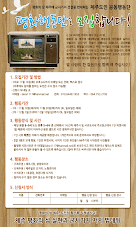
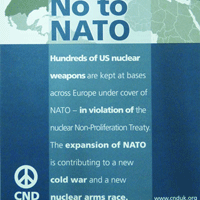

![[Translation]Statement against illegal inspection and unjust lay-off by the Kunsan USAFK!(Nov_2010)](http://4.bp.blogspot.com/_gnM5QlRx-4c/TOPLsVkZMqI/AAAAAAAAGZs/3YnnckIyAaY/S227/gunsan%2Bprotest.gif)
![[Translation] Korean organizations' statement against dispatching special force to the UAE on Nov.](http://4.bp.blogspot.com/_gnM5QlRx-4c/TOP95zHXlCI/AAAAAAAAGak/E0Ug1XtUFfM/S227/antiwarpeace.jpg)
![[Translation] Stop, Joining MD!: South Korean activists' statement and writing on Oct. 25, 2010](http://3.bp.blogspot.com/_gnM5QlRx-4c/TOP7Es4_2sI/AAAAAAAAGac/eWVMPD-U4p0/S227/StopMD.jpg)
![[In Update] People First, NO G-20 (Nov. 6 to 12, Korea)](http://2.bp.blogspot.com/_gnM5QlRx-4c/TJd53XBzHlI/AAAAAAAAFQo/ldO9JPE3eqo/S227/left21_G20.jpg)
![[International Petition] Stop US helipad plan in Okinawa to save great nature](http://4.bp.blogspot.com/_gnM5QlRx-4c/TKC2AHRNzBI/AAAAAAAAFUo/yGWXODTw_uM/S227/yanbaru_w.jpg)

![[Global Network] against the first launch of Quasi-Zenith Satellite, Japan, on Sept. 11, 2010](http://4.bp.blogspot.com/_gnM5QlRx-4c/TIowa1boy4I/AAAAAAAAFDI/82rAi98uq-c/S227/Qzss-45-0_09.jpg)

![[In update] Some collections on the Koreans’ protests against the sanction & war on Iran](http://4.bp.blogspot.com/_gnM5QlRx-4c/TJMvke6t8zI/AAAAAAAAFO4/tamQ8LUnOOA/S227/No+Sanction+on+Iran.jpg)
![[Three International Petitions] to End the Korean war and peace treaty(or peace resolution)](http://1.bp.blogspot.com/_gnM5QlRx-4c/THef7bzWxYI/AAAAAAAAE44/wwdzSDfYhdw/S227/border.jpg)
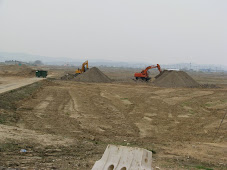


![[Collection of Documents] No Base Learning and Solidarity Program_Korea(June 14 to 20, 2010)](http://1.bp.blogspot.com/_gnM5QlRx-4c/TCTvVuN8NeI/AAAAAAAAEek/8vBJVaHdk10/S227/No-Base-banner.jpg)
![Site Fwd:[John Hines] A U.S. Debate coach’s research trip on the Issues of Korea](http://3.bp.blogspot.com/_gnM5QlRx-4c/TINCO36mzzI/AAAAAAAAE_w/Rds12NcBOXM/S227/Jeju-Peace-Tour.jpg)


![[News Update] Struggle Against the Jeju Naval Base since Jan. 18, 2010](http://1.bp.blogspot.com/_gnM5QlRx-4c/S1vvWaP25uI/AAAAAAAACkg/QvpW1tgOlKM/S226/scrum1.jpg)


![[Urgent] Please spread the Letter!: There was no Explosion! There was no Torpedo! (May 26, 2010)](http://4.bp.blogspot.com/_gnM5QlRx-4c/S_9JmsKEU7I/AAAAAAAAEP8/sAWjSPqxzUI/S227/grounded.jpg)
![Text Fwd: [Stephen Gowans]The sinking of the Cheonan: Another Gulf of Tonkin incident](http://1.bp.blogspot.com/_gnM5QlRx-4c/TAL_FtYKQ-I/AAAAAAAAERE/NEEMijiEcRM/S227/lee-myung-bak.jpg)
![[Japan Focus]Politics in Command: The "International" Investigation into the Sinking of the Cheonan](http://1.bp.blogspot.com/_gnM5QlRx-4c/TBMJ2syJzyI/AAAAAAAAEZU/uTYZccU5vyk/S227/wen_jiabao_and_lee_myungbak.png)
![[Japan Focus] Who Sank the SK Warship Cheonan? A New Stage in the US-Korean War and US-China](http://2.bp.blogspot.com/_gnM5QlRx-4c/S_iQ2vE5ZpI/AAAAAAAAEOU/Oo1SPcAe8FE/S227/buoy_map.gif)
![[Updated on 12/13/10] [Translation Project] Overseas Proofs on the Damages by the Military Bases](http://4.bp.blogspot.com/_gnM5QlRx-4c/S-qSj59gPLI/AAAAAAAAEGM/mwjlFtPE-jo/S227/missile.jpg)
![[International Petition] Close the Bases in Okinawa](http://3.bp.blogspot.com/_gnM5QlRx-4c/S8-z3DYNwNI/AAAAAAAADo4/OswTSchK09M/S227/2.jpg)

![[In Update]Blog Collection: No Korean Troops in Afghanistan](http://4.bp.blogspot.com/_gnM5QlRx-4c/SwnlLD9IewI/AAAAAAAAB9E/oUPssnpNidA/S226/No-Troops-to--Afghanistan.jpg)
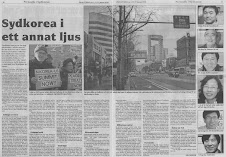

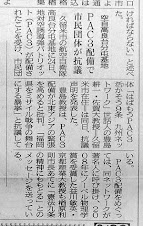

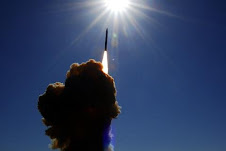






No comments:
Post a Comment